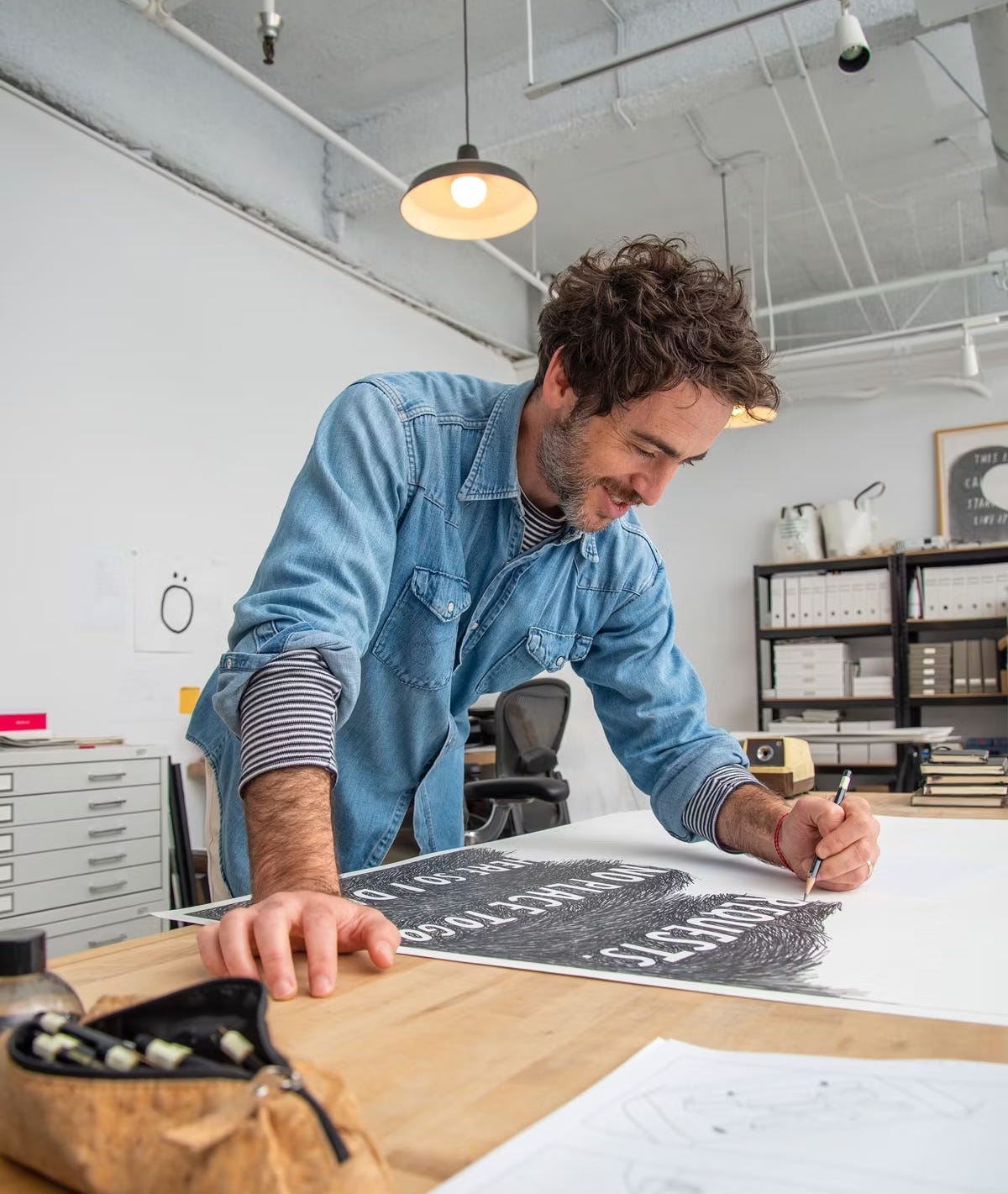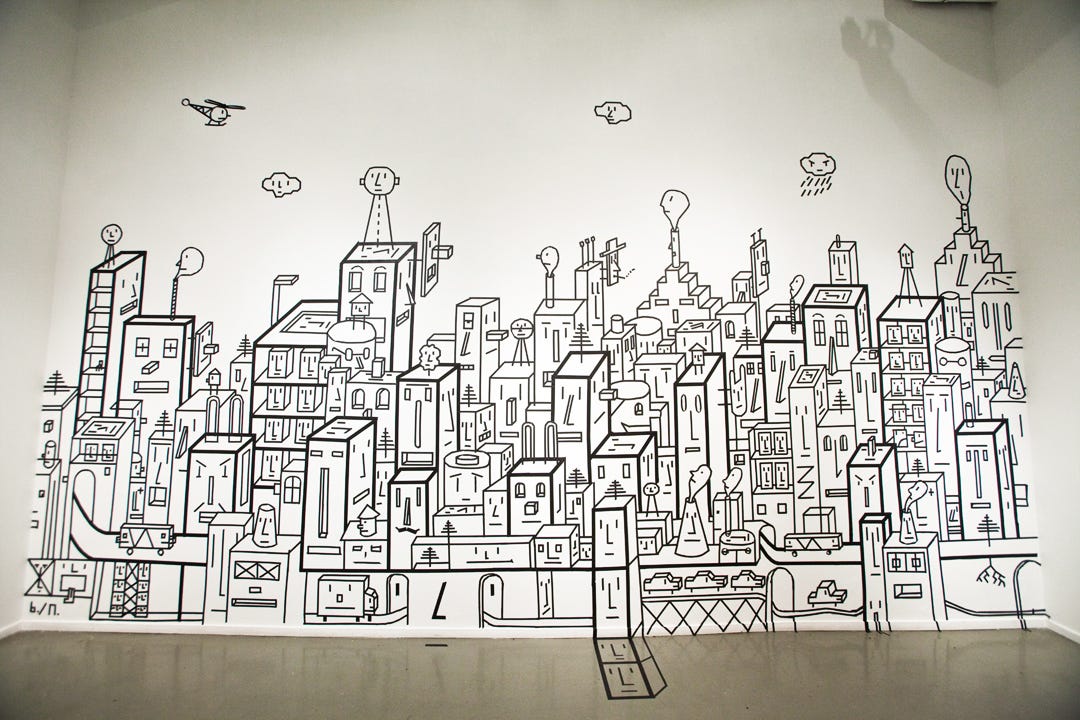Masking Tape Magic with Illustrator Brian Rea
And a little personal note on healing
Hiiiii GUT crew!
We have a great lesson and assignment for you today, featuring my pal, the phenomemal illustrator Brian Rea!
But first, a short note on healing.
The bionic artist. (A personal update.)
Should you ever need a joint replacement and have the medical care and coverage to take care of it, do it. I’m 8 weeks out from surgery. The recovery was far longer and harder than I expected. It was painful, humbling, frustrating, exhausting… all around rough. And I would do it again in a heartbeat.
Looking back on the three years leading up the surgery, I can’t believe how I adapted to the constant aching pinch in my hip — how I contorted my life to meet pain’s logistical needs: where I could go, how i would get there, who I could see, what I would do… there was an exhausting, ever present cost/benefit ticker running under every single decision, every single day. Most surprising: I can now see that the pain made it impossible for me to sit long enough to sink into that timeless space of drawing. This messed with my drawing life, my confidence, and my entire sense of self. Sure, I’ve been drawing and writing. If anyone knows that, it’s you, GUT crew. But I’m looking forward to getting lost in the process in a way I haven’t for some time. I am excited to get back out there and draw.
The surgery didn’t rewind time. I am still a 49 year old body (turning 50 in a week!) that needs to stretch and drink more water and pop the occasional Advil. HRT is my BFF. But space where the pain lived before is slowly being filled with an increasing awareness of the connection between my physical self and creative self. I understand the relationship between my body and drawing in a way I never did before. Perhaps that is what it means for an artist to become bionic. And perhaps this is some of that wisdom I’ve heard about that comes with age.
Alright, speaking of appreciating the often overlooked dimensions of life, let’s get back to our series of OVERLOOKED ART SUPPLIES!
MASKING TAPE - featuring our guest artist, illustrator BRIAN REA
Last week we started part 2 of our overlooked art supplies series and introduced masking tape. We asked you to play around with it and get to know it as a medium. Your explorations were so creative and fun and delightful! Many of you messed around with starter-murals in your own homes, perfectly priming you for this week’s visit from our pro: the incredible illustrator Brian Rea.
You absolutely know Brian’s work. If you’ve ever read (and let’s be honest, cried over) a Modern Love column in the New York Times, you’ve seen his drawings — he has been illustrating that column for the last 15 years and also served as the art director for the paper’s Opinion page.

His work has been exhibited around the world, and he is the author and illustrator of several books, most recently collaborating with James Robinson on Whale Eyes: A Memoir About Seeing and Being Seen. He is a member of Alliance Graphique Internationale and also an Adjunct Associate Professor at Art Center College of Design (where I went to school!).
Even though Brian is best known for his drawings and illustration, he is the person I immediately thought of when envisioning a tape part of this series on overlooked art materials. At Art Center, Brian has students collaborate on a giant mural using tape as their medium, and the process and outcome both blew me away. And he has gone on to make a number of eye-catching murals with tape himself, to boot.
Brian generously agreed to chat with us a bit, give us some pointers based on his work with tape, and give us our “drawing with tape” assignment this week. So let’s get into it.
Q&A with Brian Rea
Wendy: What led you to tape as a medium?
Brian: It was by accident honestly — I had been invited to do a mural workshop with Nicholas Blechman at the old Art Director’s Club in New York. We had a general sketch planned and had ordered paint. However, as I was waiting to board the plane to NYC, we got word that we couldn’t “paint” on the walls. We had to figure out an alternative. I was freaking out — do we draw on the windows, a temporary wall...?
I wasn’t sure, I just stared at the floor in the airport, then I noticed a piece of blue construction tape on the carpet. It reminded me of the Transportation Design students work at Art Center — in the halls, they’d also use blue tape to “draw” and redraw the curves of their car designs on the walls. Maybe this could work. I called Nicholas, we ordered a box of black acid-free tape in varying thicknesses, then went into our mural workshop pretending as if nothing had changed. We had no idea what it would look like in the end.
Wendy: WHOA. That’s amazing. Cool how constraints = opportunities to try new things. What have you found to be the most rewarding and most challenging things about making art with tape?
Brian: The most rewarding part is instant results. Tape can cover an area quite quickly so you get a clear sense of the composition, and scale of things very efficiently while mapping out a piece on a wall. It’s also quite easy to “redraw” any part — tape makes no mistakes, because if something feels off, simply remove and rebuild it.
As far as challenges go, well...making sure you have enough tape.
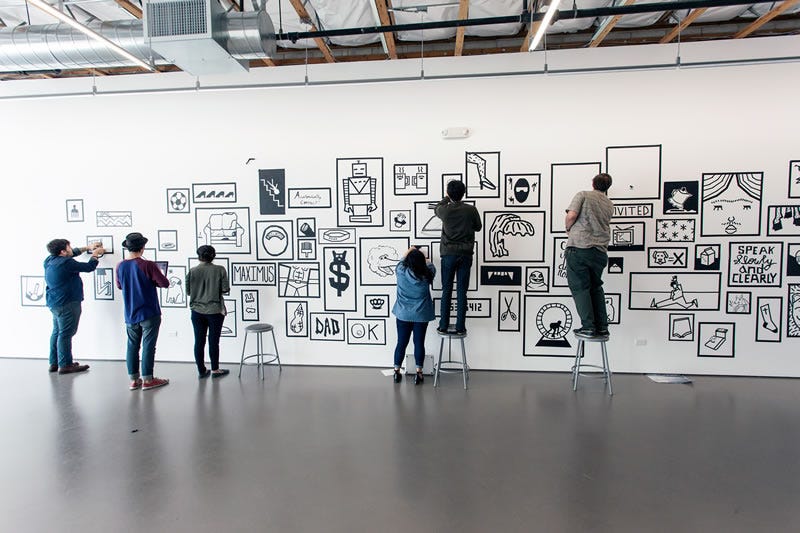
Wendy: LOL. Makes sense. And tape ain’t cheap! As a professor, you have given your students the project of making large murals with tape. What do your students learn from doing this? What can we learn from your students?
Brian: Students can learn all practical aspects of mural making, but the magical thing is they don’t realize they’re learning. Students aren’t thinking about painting or drawing, so the pressure a student might feel making a mural for the first time is gone. Working with tape somehow removes that anxiety.
Tape is pretty democratic because everyone is using the same tool, the same thickness, same color, it’s a tool with limits and constants. Instead, students spend their time communicating with each other while working- pretty soon they’re collaborating as a team, critiquing and art directing each other.
They discover their strengths and weaknesses as a group; who is good with details, cleaning up areas, who is vocal vs who is quietly documenting the whole process. They learn to create a “system” across the wall, partly while sketching before the mural, but also while mapping the mural out in the “transfer” stage. They learn how to manage large scale projects and that in turn builds a ton of confidence that these projects are possible.
“The most important thing is to have a plan — a sketch. Even a rough one. “
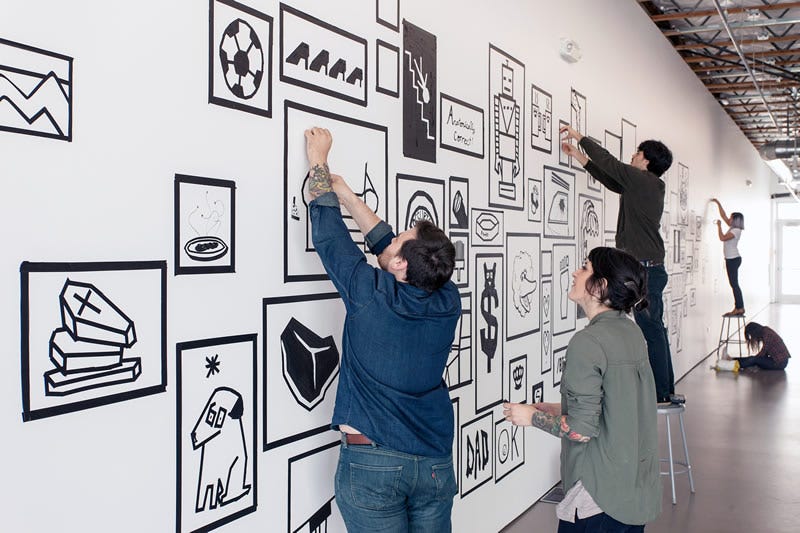
Wendy: Additionally, in your classes, your tape murals have been a collaborative project among your students. While some GUT members might want to try making tape art with their families at home, some might be on their own. What are some considerations for doing it solo or as a group?
Brian: The most important thing is to have a plan — a sketch. Even a rough one. I always try to use one whether in a group or as an individual. It is possible to freestyle the whole wall however, it may feel a bit casual and may not hold together, especially if it’s a group project.
As a group, it’s also super helpful to discuss the mark making — if the mural has figures, maybe discuss a system for how “features” are drawn (eyes, hair, etc) so the wall has continuity; discuss if the team will use curved lines or all straight lines and angles (again for consistency purposes); discuss the thickness of the tape — should everyone use all the same tape or thinner tape for details, thicker for broad parts. The other thing to consider is the temporary-ness of this material. This is not a permanent material — so it’s not ideal for outdoors or bright sunlit areas and should only be used in areas that have limited foot traffic. And make sure you have all the tools/tape needed when you begin the project — step ladders, enough tape, and give yourself enough time for cleaning up when done.

Wendy: Using tape as an art medium will be new for many people in the GUT. As an artist best known for illustration, how do you relate drawing to working with tape? In other words, how does your work in one medium transfer to a new medium, and vice versa?
Brian: Each medium is different and offers different results — tape can create more graphic results, the marks are more broad and simplified, but hopefully the voice of the work is similar to my other drawings or paintings. Creating tape murals can feel more like building rather than drawing or painting.
Wendy: Thanks so much, Brian. Alright GUT crew, let’s do this!
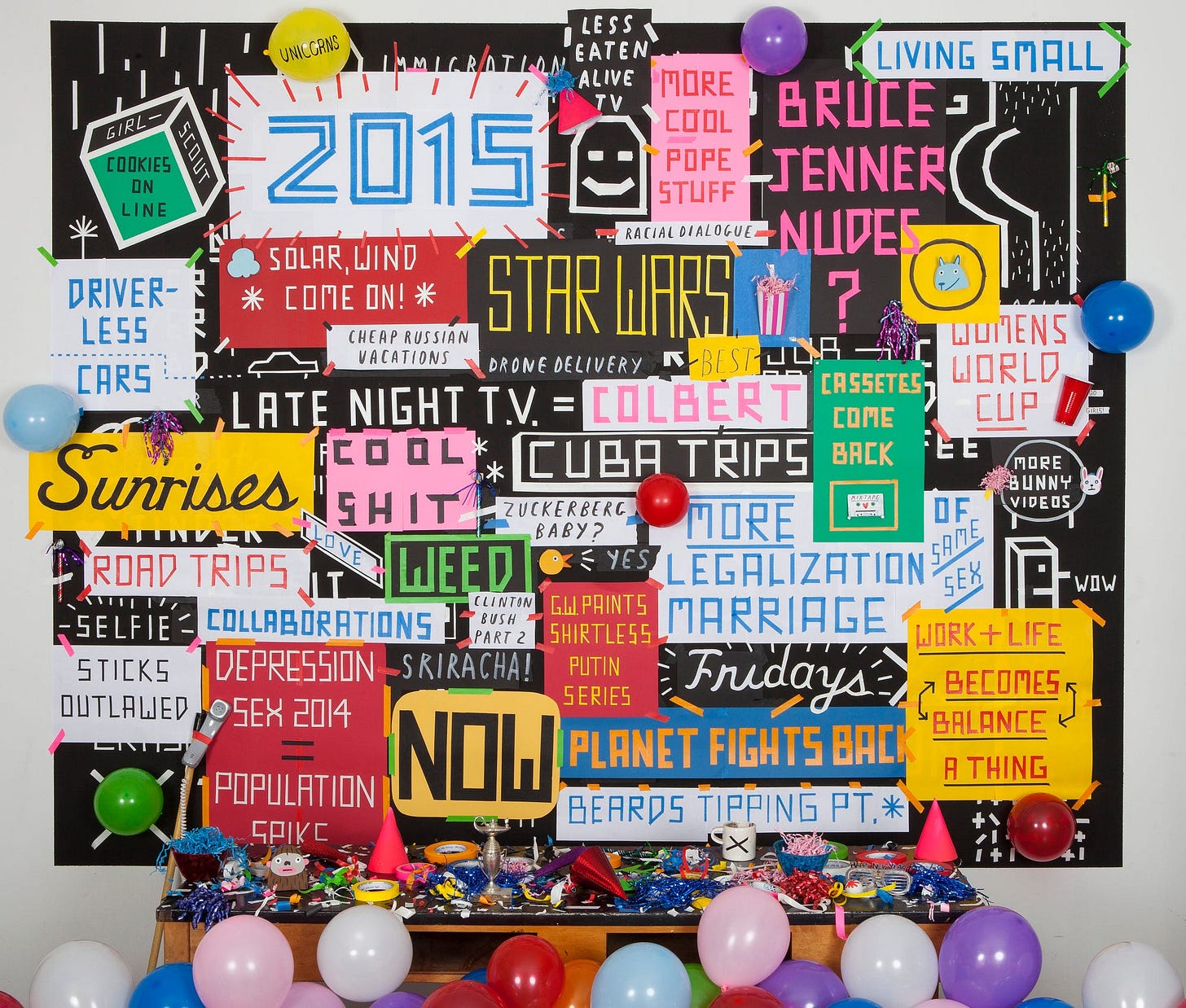
The Assignment: Create Your Own Tape Mural, with tips from Brian Rea
Keep reading with a 7-day free trial
Subscribe to DrawTogether with WendyMac to keep reading this post and get 7 days of free access to the full post archives.



